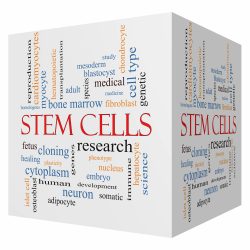How Processed Foods Quietly Spike Your Blood Pressure
 A recent study suggests that phosphate additives, commonly used to preserve and enhance the flavor of processed packaged foods, may increase blood pressure. This is due to causing the protein FGF23 to build up in the blood and infiltrate key brain areas, such as the brain stem, that regulate blood pressure.
A recent study suggests that phosphate additives, commonly used to preserve and enhance the flavor of processed packaged foods, may increase blood pressure. This is due to causing the protein FGF23 to build up in the blood and infiltrate key brain areas, such as the brain stem, that regulate blood pressure.
FGF23, a fibroblast growth factor protein triggered by inorganic phosphates in processed foods, can elevate blood pressure when consumed in large amounts. It accumulates in the blood and can cross into key brain regions, activating specific receptors that increase sympathetic nerve activity, ultimately leading to hypertension.
The study primarily concerns inorganic phosphates, which are absorbed at over 90% during digestion from processed foods, compared to organic phosphates in vegetables, where only 40-60% are absorbed, making inorganic phosphates more likely to accumulate to harmful levels in the blood.
Inorganic phosphate additives, widely used as preservatives and flavor enhancers in processed foods and cola drinks, are highly absorbable, posing greater risks than organic phosphates. While these additives help preserve and emulsify ingredients in ultra-processed foods, excessive phosphate intake can disrupt the calcium-to-phosphorus ratio, potentially leading to weakened bones, kidney damage, and heightened risk of heart issues.
Phosphates are vital minerals essential for bodily processes such as DNA formation, cellular structure, forming strong bones, and generating energy. When consumed as part of a balanced diet rich in animal and plant proteins, whole grains, fruits, and vegetables, phosphates pose no concern. However, excessive phosphorus in the blood can pose serious health risks.
A routine blood test can measure phosphorus levels in your blood, with a normal range for adults being 2.5 to 4.5 mg/dL. Elevated phosphorus, or levels above 4.5 mg/dL, is considered high, and reducing dietary phosphorus intake is a key step for managing this condition.
To view the original scientific study click below:
High Dietary Phosphate Intake Induces Hypertension and Sympathetic Overactivation Through Central Fibroblast Growth Factor Receptor Signaling



 Swimming is an excellent form of exercise, but the chemicals used to keep pools germ-free can pose health to various parts of the body. A recent study highlights that disinfectants commonly used in swimming pools, such as chlorine and bromine, produce disinfection by-products when they interact with organic materials in the water. These by-products, called chloramines, form when chlorine reacts with substances like sweat and urine. Chloramines can irritate the eyes, skin, and respiratory passages, posing health risks to swimmers.
Swimming is an excellent form of exercise, but the chemicals used to keep pools germ-free can pose health to various parts of the body. A recent study highlights that disinfectants commonly used in swimming pools, such as chlorine and bromine, produce disinfection by-products when they interact with organic materials in the water. These by-products, called chloramines, form when chlorine reacts with substances like sweat and urine. Chloramines can irritate the eyes, skin, and respiratory passages, posing health risks to swimmers. A well-balanced gut microbiome is essential for supporting overall health, including the absorption of essential bone-building nutrients. When gut health declines, the body’s ability to absorb these nutrients is compromised. Studies have connected a healthy gut microbiome to improved bone density.
A well-balanced gut microbiome is essential for supporting overall health, including the absorption of essential bone-building nutrients. When gut health declines, the body’s ability to absorb these nutrients is compromised. Studies have connected a healthy gut microbiome to improved bone density. Recent research indicates that smoking marijuana or consuming THC gummies can adversely affect vascular health. Even healthy individuals who use cannabis may have a higher risk of developing heart disease.
Recent research indicates that smoking marijuana or consuming THC gummies can adversely affect vascular health. Even healthy individuals who use cannabis may have a higher risk of developing heart disease. Household dust is an intricate blend of organic material, microbes, and hazardous chemicals. These include biological contaminants such as mold, bacteria, mildew, and dust mites, alongside toxic substances such as mercury, lead, and flame retardants, posing potential health risks. Driven by the harmful impact of cleaners, medications, and environmental pollutants, dust often accumulates over months or years, creating a potent microbial mix.
Household dust is an intricate blend of organic material, microbes, and hazardous chemicals. These include biological contaminants such as mold, bacteria, mildew, and dust mites, alongside toxic substances such as mercury, lead, and flame retardants, posing potential health risks. Driven by the harmful impact of cleaners, medications, and environmental pollutants, dust often accumulates over months or years, creating a potent microbial mix. Everyday use of plastic products generates tiny, nearly invisible plastic particles that may affect human health when ingested or inhaled. To address this, researchers developed biodegradable plastics using plant-based starch instead of petroleum. But these may not be as safe or beneficial to health as initially believed. Prolonged exposure to starch-based microplastics indicates broad health impacts.
Everyday use of plastic products generates tiny, nearly invisible plastic particles that may affect human health when ingested or inhaled. To address this, researchers developed biodegradable plastics using plant-based starch instead of petroleum. But these may not be as safe or beneficial to health as initially believed. Prolonged exposure to starch-based microplastics indicates broad health impacts. Bone regeneration is a key focus in regenerative medicine, as strong bones are vital for movement and overall health. Stem cells are essential in this process, transforming into bone-forming cells and releasing growth factors that speed up healing. Recent research has revealed new understanding into how stem cells maintain and repair bones, and how aging and poor healing conditions disrupt this process.
Bone regeneration is a key focus in regenerative medicine, as strong bones are vital for movement and overall health. Stem cells are essential in this process, transforming into bone-forming cells and releasing growth factors that speed up healing. Recent research has revealed new understanding into how stem cells maintain and repair bones, and how aging and poor healing conditions disrupt this process. Scientists are increasingly focusing on nutrients that go beyond basic bodily functions to promote healthy aging. Recent research reveals that vitamin D supplements may counteract cellular aging signs.
Scientists are increasingly focusing on nutrients that go beyond basic bodily functions to promote healthy aging. Recent research reveals that vitamin D supplements may counteract cellular aging signs.